Techniques for Hanging Tapestries
Tapestries are large, textile-based artworks that typically feature intricate designs, hanging tapestries or pictorial scenes woven into the fabric. They have been used historically for decorative purposes, often adorning the walls of castles, palaces, and stately homes.
These pieces of art can vary in size, shape, and design, ranging from small decorative hangings to expansive wall coverings that depict elaborate narratives or motifs.

Importance of proper hanging techniques:
Properly hanging tapestries is crucial for both aesthetic and practical reasons.
A poorly hung tapestry can sag, wrinkle, or distort its design, diminishing its visual appeal and potentially causing damage over time.
Additionally, inadequate hanging methods may not adequately support the weight of the tapestry, leading to structural issues or even damage to the wall.
Overview of key factors for successful tapestry hanging:
Successful tapestry hanging involves considering various factors, including selecting the right location, preparing the wall surface, choosing appropriate hanging hardware, and employing suitable hanging methods.
By understanding and addressing these key factors, individuals can ensure that their tapestries are displayed effectively, securely, and aesthetically in their living spaces.
Selecting the Right Location
Consideration of Wall Space
When hanging tapestries, it’s crucial to assess the available wall space. Consider the dimensions of the tapestry and ensure that the chosen location can accommodate it without overwhelming the surrounding decor or appearing cramped. Adequate wall space allows the tapestry to be displayed prominently, enhancing its visual impact and preventing it from feeling overcrowded by other elements in the room.

Assessing Lighting Conditions
Lighting can significantly affect the appearance and longevity of a tapestry. When selecting a location for hanging, evaluate the lighting conditions in the room. Ideally, choose a spot away from direct sunlight to prevent fading and damage to the fabric over time. Additionally, consider the direction of artificial lighting sources to avoid glare or shadows that may detract from the tapestry’s visibility and aesthetics.
Avoiding Areas Prone to Moisture or Direct Sunlight
Moisture and direct sunlight are among the primary enemies of tapestries. Moisture can promote mold growth and weaken the fabric, leading to deterioration. Direct sunlight can cause colors to fade and fibers to weaken over time. Therefore, it’s essential to avoid hanging tapestries in areas prone to moisture, such as bathrooms or kitchens, as well as places where they will be exposed to prolonged sunlight, such as near windows or glass doors. Instead, opt for a location with stable humidity levels and minimal exposure to direct sunlight to preserve the tapestry’s beauty and integrity for years to come.
Preparing the Wall
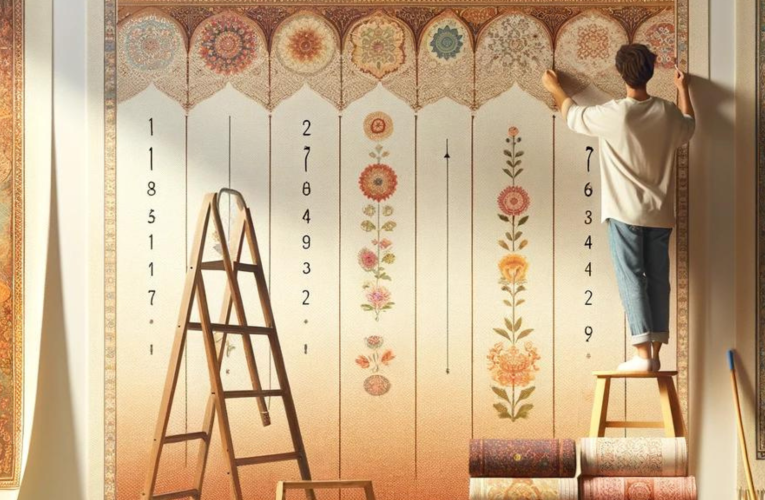
Cleaning the Wall Surface
Before hanging a tapestry, it’s crucial to ensure that the wall surface is clean and free from dust, dirt, or any other debris that could interfere with the hanging process.
Use a mild detergent solution and a soft cloth or sponge to gently clean the wall surface. Avoid harsh cleaners or abrasive materials that could damage the wall or the tapestry.
Patching Holes or Imperfections
Inspect the wall for any holes, cracks, or imperfections that may affect the stability or appearance of the tapestry once hung.
Fill in any holes or cracks with spackling compound or patching plaster, using a putty knife to smooth the surface.
Allow the patched areas to dry completely before proceeding with hanging the tapestry.
Choosing Appropriate Hardware for the Wall Type (Drywall, Plaster, etc.)
Different types of walls require different types of hardware for secure hanging.
For drywall, consider using anchors or screws designed specifically for this material to provide sufficient support for the weight of the tapestry.
For plaster walls, use wall anchors or screws designed to penetrate and hold securely in this denser material.
Be sure to select hardware that is appropriate for the weight of the tapestry and the conditions of the wall to ensure a safe and stable hanging arrangement.
Consult with hardware experts or follow manufacturer recommendations for the best hardware options for your specific wall type.
Choosing Hanging Hardware
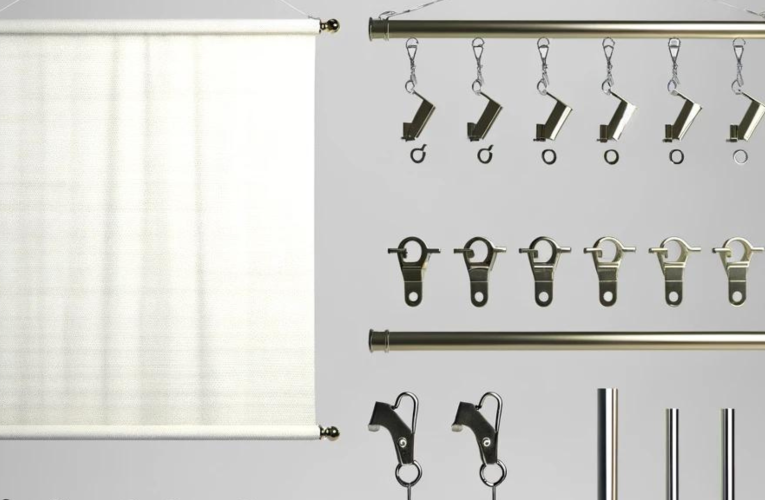
Types of Hardware: Rods, Hooks, Clips, etc.
When hanging tapestries, various types of hardware can be employed depending on the desired aesthetic and practical considerations.
Rods: Typically made of metal or wood, rods provide a sturdy support for tapestries. They come in different lengths and diameters to accommodate various tapestry sizes. Rods are often preferred for larger tapestries as they distribute weight evenly along the width.
Hooks: Hooks are versatile and commonly used for hanging tapestries. They can be mounted directly onto the wall and provide easy attachment points for the tapestry. Hooks come in different shapes and sizes, offering flexibility in design and function.
Clips: Clips provide a simple and adjustable method for hanging tapestries. They can be attached to a rod, wire, or directly to the tapestry itself, allowing for easy adjustment and repositioning. Clips are suitable for lightweight tapestries or for those with hanging loops.
Others: Other hardware options include curtain rings, brackets, and adhesive hooks, each offering distinct advantages depending on the tapestry’s size, weight, and hanging requirements.
Weight-Bearing Capacity Considerations
It’s crucial to consider the weight of the tapestry when selecting hanging hardware to ensure proper support and stability.
Hardware should be rated to bear the weight of the tapestry without risk of failure or damage to the wall.
For heavier tapestries, sturdy rods with strong mounting hardware are recommended to distribute the weight evenly and prevent sagging or damage over time.
Lightweight tapestries may require less robust hardware, such as small hooks or adhesive clips, but it’s still important to ensure they can adequately support the tapestry’s weight.
Compatibility with Tapestry Rod Sleeve or Hanging Loops
Many tapestries come with a rod sleeve or loops sewn into the fabric for hanging.
When choosing hardware, consider the compatibility with these features to ensure a secure and stable hanging method.
Rods are ideal for tapestries with rod sleeves, as they can easily slide through the sleeve, providing a secure and even hang.
Hooks or clips can be used with tapestries featuring hanging loops, allowing for easy attachment and adjustment.
It’s essential to ensure that the hardware selected fits properly with the tapestry’s hanging features to prevent damage or distortion to the fabric.
Hanging Methods
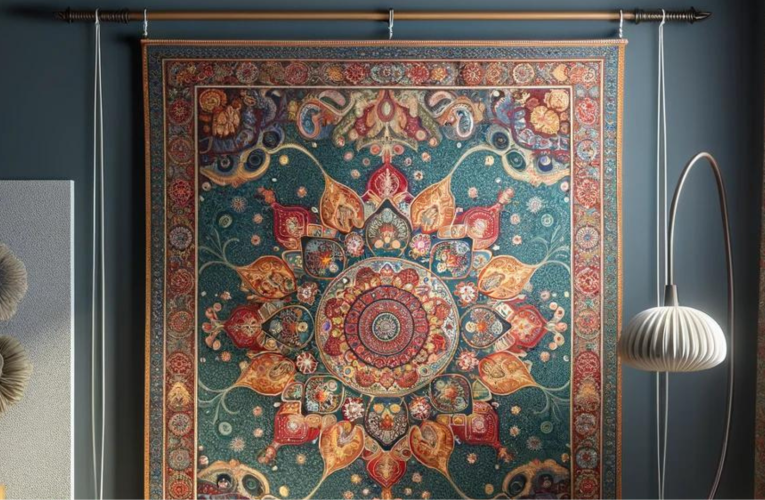
Hanging tapestries can be achieved through various methods, each with its own considerations for ensuring stability and aesthetic appeal.
Using a Tapestry Rod
Selecting the Appropriate Rod Size:
- Choose a rod size that matches the width of the tapestry or slightly exceeds it to prevent the fabric from bunching.
- Ensure the rod’s diameter can support the weight of the tapestry without bending or warping.
Attaching the Rod Securely to the Wall:
- Use wall anchors, screws, or brackets appropriate for the weight of the tapestry and the type of wall material.
- Position the rod at the desired height and level it carefully to ensure the tapestry hangs evenly.
Sliding the Tapestry onto the Rod:
- Slide the tapestry onto the rod gently, taking care not to snag or damage the fabric.
- Adjust the position of the tapestry on the rod as needed to achieve the desired display.
Utilizing Hooks or Clips
Spacing and Alignment for Even Distribution of Weight:
- Install hooks or clips along the top edge of the tapestry at regular intervals to distribute the weight evenly.
- Ensure proper alignment of the hooks or clips to maintain the tapestry’s straightness and prevent tilting or sagging.
Ensuring Proper Tension to Avoid Sagging:
- Apply sufficient tension to the tapestry when attaching it to hooks or clips to prevent sagging or drooping.
- Adjust the tension as needed to achieve a taut and smooth appearance without putting excessive strain on the fabric.
Sewing Loops or Pockets onto the Tapestry for Direct Hanging
Reinforcing Stitching for Durability:
- Sew sturdy loops or pockets onto the back of the tapestry using strong thread or fabric.
- Reinforce the stitching at stress points to ensure the loops can support the weight of the tapestry without tearing.
Ensuring Uniform Spacing of Loops for Balanced Hanging:
- Space the loops or pockets evenly along the top edge of the tapestry to distribute the weight uniformly.
- Use a measuring tool or template to ensure consistent spacing for a balanced appearance when the tapestry is hung.
By employing these hanging techniques, you can effectively display your tapestries while ensuring they are securely mounted and visually appealing in your space.
Adjusting for Size and Weight
Distributing weight evenly across the tapestry
Hanging tapestries evenly distributes their weight prevents strain on specific points, reducing the risk of tearing or damage.
Ensure that the hanging hardware, such as rods or hooks, are spaced appropriately to support the entire width and length of the tapestry.
Avoid concentrating weight on a single point, as this can cause distortion or stretching of the fabric over time.
Using additional support for large or heavy tapestries
Large or heavy tapestries may require additional support beyond standard hanging hardware.
Consider installing additional brackets, anchors, or support rods to provide extra stability and prevent sagging.
Assess the structural integrity of the wall and choose support options that can adequately bear the weight of the tapestry.
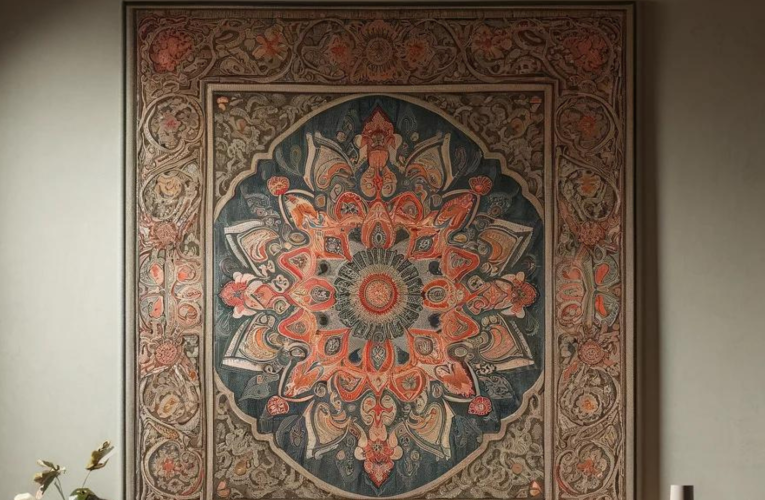
Testing stability and making adjustments as needed
After hanging the tapestry, test its stability by gently nudging or tapping on various points to ensure it remains securely in place.
Monitor the tapestry over time for any signs of sagging, shifting, or loosening of hardware.
Make adjustments as necessary, such as tightening screws or repositioning support brackets, to maintain optimal stability and presentation.
Overall, adjusting for size and weight when hanging tapestries involves careful consideration of distribution, additional support measures, and ongoing maintenance to ensure a secure and visually pleasing display.
Enhancing Aesthetic Presentation
Considering the tapestry's design and orientation
Design Compatibility: When hanging tapestries, it’s essential to consider how the design of the tapestry interacts with the surrounding space. Choose a location and orientation that complements the theme or motifs of the tapestry.
Visual Impact: Assess how the colors, patterns, and subject matter of the tapestry interact with the room’s decor and ambiance. Opt for a location where the tapestry can be appreciated without overwhelming or clashing with other elements in the room.
Ensuring proper alignment and symmetry
Balance and Symmetry: Properly aligning the tapestry ensures visual harmony within the space. Use a level or measuring tape to ensure the tapestry hangs straight and parallel to the ground, avoiding any noticeable tilting or skewing.
Centering: Position the tapestry centrally within the chosen space to create a focal point. This helps draw attention to the artwork and creates a balanced composition within the room.
Concealing hardware for a clean, finished look
Discreet Mounting: Choose hardware that allows for secure hanging while minimizing its visibility. This could involve using hooks, rods, or clips that blend with the wall color or are strategically placed to be less noticeable.
Covering Hardware: For added aesthetic appeal, consider covering hardware with decorative elements such as fabric borders or valances. This not only conceals the mounting hardware but also adds a decorative touch that complements the tapestry.
Tassel or Cord Coverings: Incorporate decorative tassels or cords to hide the attachment points of the tapestry, creating a seamless transition between the artwork and the wall. These coverings can add a touch of elegance while serving a practical purpose.
By considering the tapestry’s design, ensuring proper alignment and symmetry, and concealing hardware effectively, you can enhance the aesthetic presentation of hanging tapestries in your space, elevating both the visual appeal of the artwork and the overall ambiance of the room.
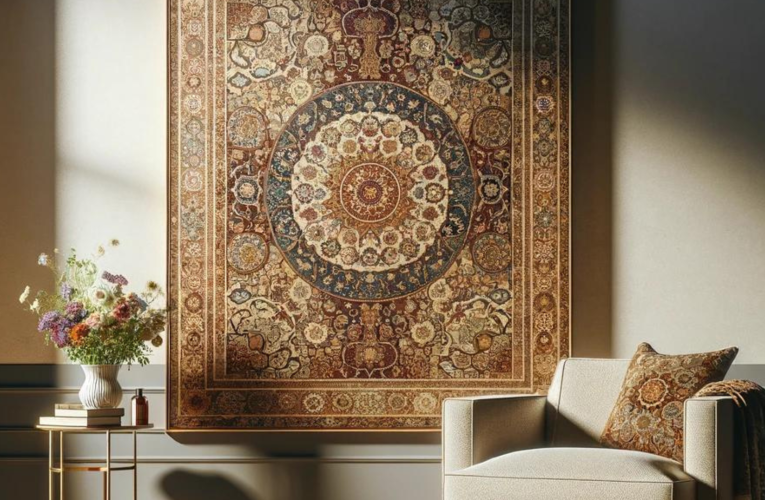
Maintenance and Care for Hanging Tapestries
Regular Cleaning to Prevent Dust Buildup
Dust accumulation on tapestries not only dulls their appearance but can also lead to discoloration and deterioration over time.
Use a soft-bristled brush or vacuum cleaner with a brush attachment to gently remove dust from the surface of the tapestry.
Avoid using harsh cleaning chemicals or abrasive materials that could damage the delicate fibers of the tapestry.
Regular cleaning helps to maintain the vibrancy and integrity of the tapestry, ensuring its longevity as a decorative piece in your home.
Periodic Checks for Loose Hardware or Damage
Over time, the hardware used to hang tapestries may become loose or worn, compromising the stability of the installation.
Periodically inspect the tapestry and its hanging hardware for any signs of loosening, rust, or damage.
Tighten any screws or bolts securing the hardware to the wall, ensuring that it remains firmly in place.
Look for any tears, fraying, or other damage to the tapestry itself, especially along the edges or in areas of high tension.
Addressing these issues promptly helps to prevent accidents such as the tapestry falling from the wall or further damage occurring.
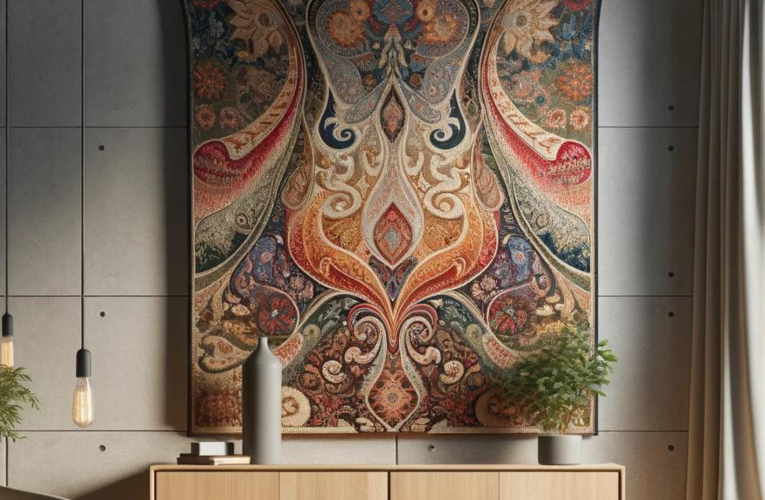
Addressing Any Issues Promptly to Prevent Further Damage
If you notice any loose hardware or damage to the tapestry during your periodic checks, take immediate action to address these issues.
Tighten loose screws or replace damaged hardware as needed to maintain the stability of the installation.
For damaged areas of the tapestry, consider seeking professional restoration services to repair any tears or fraying.
Promptly addressing issues helps to prevent further damage from occurring, preserving the beauty and integrity of the tapestry for years to come.
By staying proactive in maintenance and care, you can ensure that your hanging tapestries remain a cherished part of your home décor for generations.






